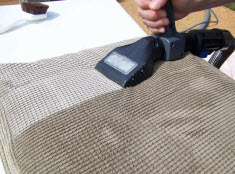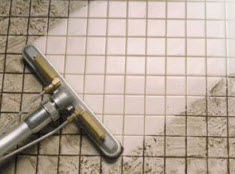Why do we have carpet in our homes? Carpets add beauty and style to a home with all the colors and styles available. They can improve indoor air quality because new carpet is the lowest VOC-emitting flooring available. Carpet also acts like an air filter, trapping dust, pollen and other particles and removes them from the air you breathe. Carpets provide warmth and comfort with thermal resistance and they make slips and falls softer, making it great for homes with small children and the elderly. Carpet is also great at reducing noise with the added cushion pad underneath it. But just how did carpets evolve?
Evolution of Carpet
Prehistoric humans lived in caves with cold, hard rock beneath their feet. It probably didn’t take them long to start laying animal skins and other soft material on the floors. You may even say these were the first carpets. Carpet has a long and interesting history. 9,000 years ago, sheep and goats were sheared for their hair and wool that could be spun and woven to create a floor covering. Knotted carpet rugs are believed to have developed in western Asia some 4,000 years ago. As animals were domesticated, the reliance on using them for their hides decreased and the use of woven materials for this use increased.
First Carpet Mills or Factories
In the United States, the earliest carpets were large rugs made of woven wool. These woven rugs were made on large looms that were brought from England. The carpet industry in the United States started in 1971 in Philadelphia, Pennsylvania when William Sprague opened a carpet mill that allowed high-quality carpets to be made very quickly. The carpets we enjoy today have their own history that is different than that of their woven predecessors. It may surprise you to learn that carpets started off as handcrafted bedspreads. Around the turn of the 20th century, a young woman named Catherine Evans Whitener made a wedding present that was a handcrafted bedspread. She used a quilt pattern and sewed thick cotton yarn onto unbleached muslin fabric. She even clipped the ends of the yarn, so they would fluff out and make the bedspread softer. The process she used to make bedspreads became very popular and many families started to make a living by making these bedspreads. The demand for them began to soar and Dalton-area families were able to get through the Great Depression from the income brought in.
Dalton, GA is the Carpet Capital of the World
Machines were eventually developed to automate the tufting process. New synthetic fibers were developed after World War II. These fibers replaced wool and cotton and included nylon, polyester, acrylic and rayon. Today, over 90% of tufted broadloom carpets on the market are made of synthetic fibers. Dalton is still the center of the carpet industry and produces more than 70% of carpet output in the world. For this reason, Dalton is known as the “Carpet Capital of the World”.
Carpet Cleaning, Stain Removal & More in Orange, Santa Ana, Rancho Cucamonga, Anaheim, Whittier, Riverside, Chino & Fullerton California
With all the benefits that come with having carpet in your home, you’ll want to take care of it. Trust the professionals at Leading Carpet Cleaning for all your carpet cleaning needs. Contact us today!











